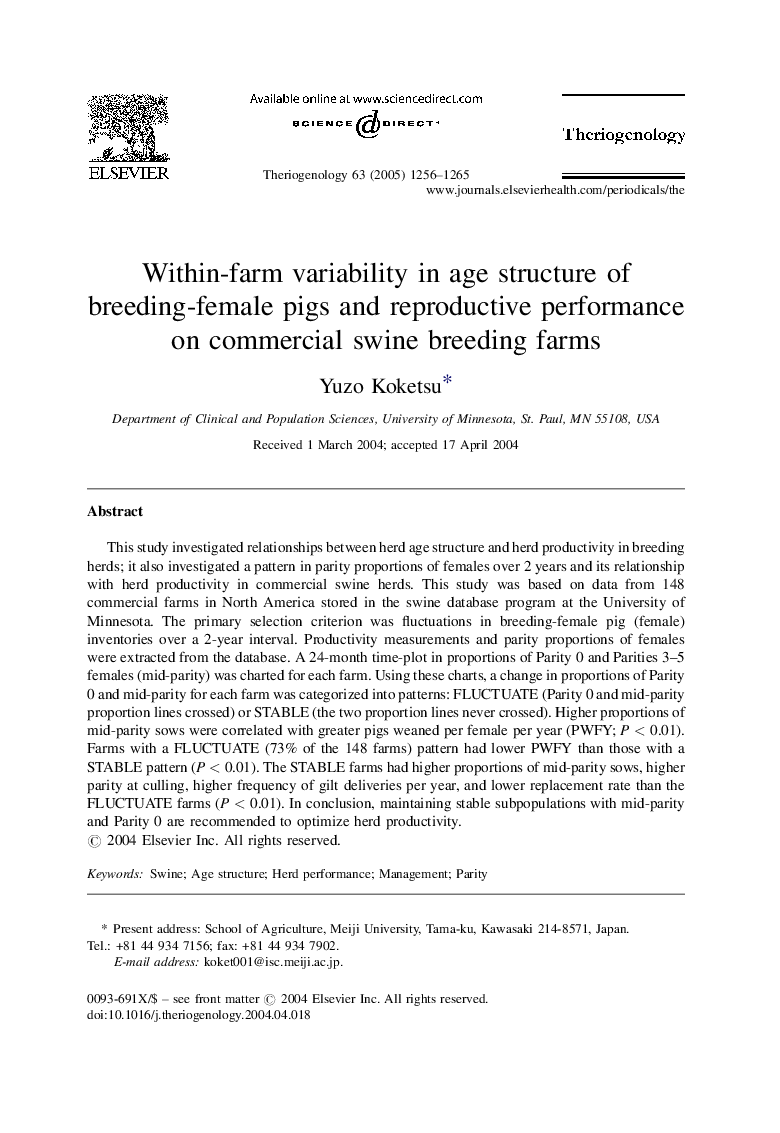| Article ID | Journal | Published Year | Pages | File Type |
|---|---|---|---|---|
| 10893263 | Theriogenology | 2005 | 10 Pages |
Abstract
This study investigated relationships between herd age structure and herd productivity in breeding herds; it also investigated a pattern in parity proportions of females over 2 years and its relationship with herd productivity in commercial swine herds. This study was based on data from 148 commercial farms in North America stored in the swine database program at the University of Minnesota. The primary selection criterion was fluctuations in breeding-female pig (female) inventories over a 2-year interval. Productivity measurements and parity proportions of females were extracted from the database. A 24-month time-plot in proportions of Parity 0 and Parities 3-5 females (mid-parity) was charted for each farm. Using these charts, a change in proportions of Parity 0 and mid-parity for each farm was categorized into patterns: FLUCTUATE (Parity 0 and mid-parity proportion lines crossed) or STABLE (the two proportion lines never crossed). Higher proportions of mid-parity sows were correlated with greater pigs weaned per female per year (PWFY; P < 0.01). Farms with a FLUCTUATE (73% of the 148 farms) pattern had lower PWFY than those with a STABLE pattern (P < 0.01). The STABLE farms had higher proportions of mid-parity sows, higher parity at culling, higher frequency of gilt deliveries per year, and lower replacement rate than the FLUCTUATE farms (P < 0.01). In conclusion, maintaining stable subpopulations with mid-parity and Parity 0 are recommended to optimize herd productivity.
Keywords
Related Topics
Life Sciences
Agricultural and Biological Sciences
Animal Science and Zoology
Authors
Yuzo Koketsu,
